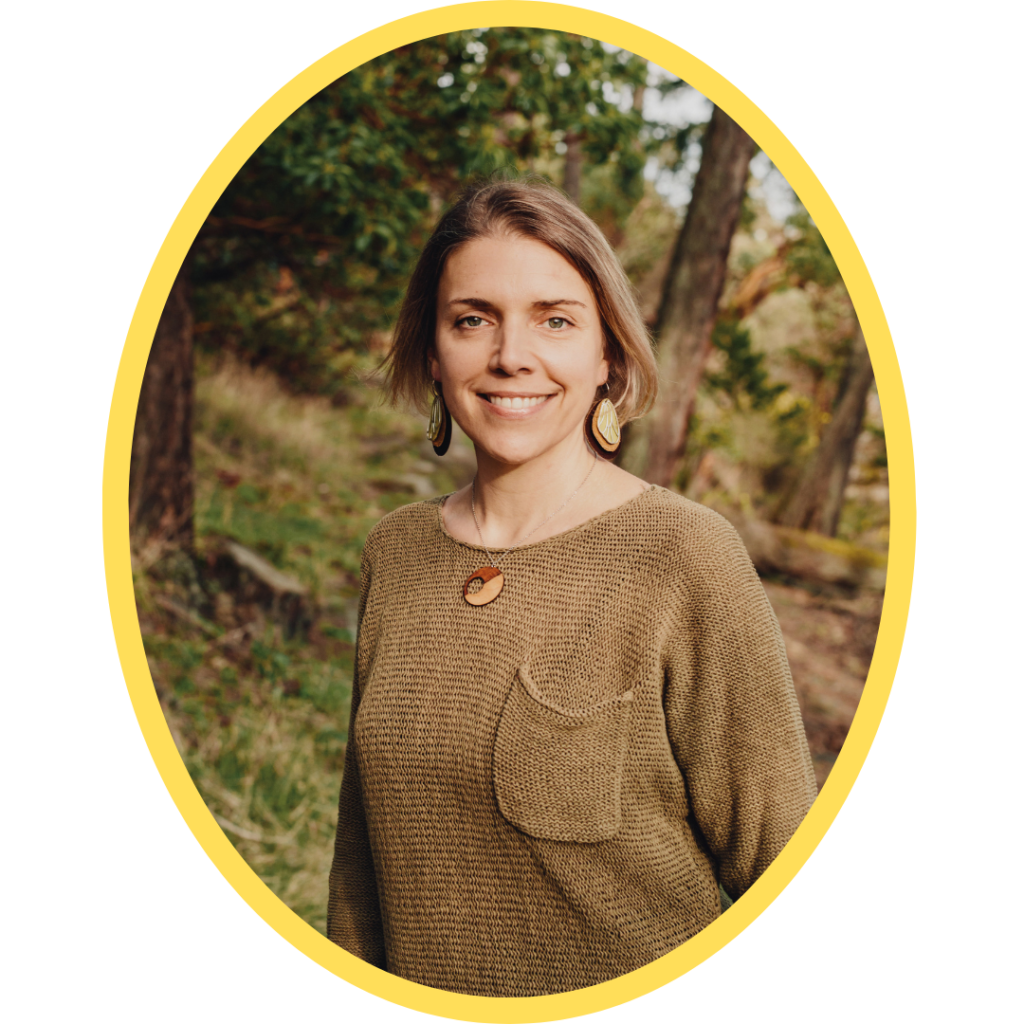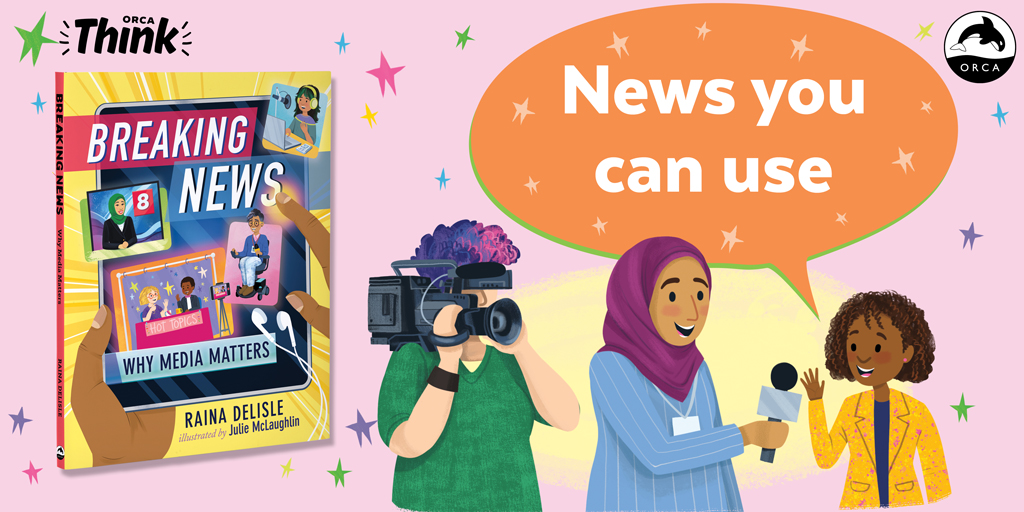“A welcome look at how journalists shine a light on the world.”
– Kirkus Reviews
The news can inform and inspire, but it can also misinform and mislead.
Part of the nonfiction Orca Think series for middle-grade readers, Breaking News: Why Media Matters helps kids become critical news consumers and teaches them how to tell fact from fiction. It explores the history of the media industry, the important roles the news plays today and the challenges it faces, and it gives kids the tools they need to find the news they can use.
In this article, author Raina Delisle answers some questions about her new book, Breaking News.
1. What inspired you to write this book?
My older daughter followed in my footsteps and got a paper route when she was eight. Delivering the paper to our neighbors every week brought up a lot of questions. “Who puts together the paper?” “How do they decide what makes the news?” “What’s the difference between a news article and an opinion article?” “Why are there ads in the paper?” And, when she didn’t feel like doing the paper route, “Why do people need the news anyway?” I realized others kids must have similar questions, and so I wrote this book to help answer them.
2. You have years of experience as a journalist working in newspapers, TV news and independent online publications across Canada. How did this influence Breaking News?
Having extensive experience as a staff and freelance journalist at a variety of news outlets has given me deep insight into the different ways in which they operate: how they gather and produce news, how they connect with their audiences, how they tackle the challenges the industry is facing and how they stay afloat. It has also given me insight into how some outlets perpetuate problems like sexism and racism as well as misinformation and disinformation. For instance, some outlets have mostly white staff and treat racialized newsmakers differently than white newsmakers, while others fail to fact-check their stories or produce stories that intentionally mislead people to further their own agendas.
3. During your time as a journalist, what was one of your favorite articles that you wrote or topics you covered?
One of my favorite articles was a first-person opinion piece about thrift store giant Value Village (also known as Savers) selling sexist and sexualizing Halloween costumes for kids. My older daughter, who was a preschooler at the time, wanted to be a firefighter for Halloween, so we headed to Value Village, “Your Halloween destination for the whole family.” We found a boys’ firefighter costume with a bright red jacket, a traditional helmet and an axe, and a girls’ version with a skin-tight, short, shiny dress that was surely flammable, complete with a fascinator (in lieu of a helmet) never before seen on a real firefighter. Value Village didn’t respond to my many requests to interview someone for the story, but when the article went viral, the company issued a statement and stopped selling the costumes, proving the power of the media.
4. Why do you think media literacy is so important for kids (and people of all ages)?
Media literacy is critical because every day we make decisions that affect our lives based on the news we get, whether it’s from traditional media, social media or fake news sites. These decisions can be as simple as bringing an umbrella to school based on a weather report or as serious not getting the COVID-19 vaccine because some guy on YouTube said the government put microchips in vaccines to track you. People, including kids, are spending more time online where they’re exposed to fake news, clickbait and echo chambers. On top of that, many media outlets choose which stories to tell and how to tell them based on their social, political, environmental or economic beliefs but don’t declare their bias to their readers. By taking some time to learn media literacy skills, kids and adults alike can ensure they’re making the best decisions for themselves based on fact rather than fiction.
5. What was one unexpected fact that you learned while researching Breaking News?
I was surprised to learn that the term “anchor”—as in the anchor of a newscast—comes from relay racing. In a race, the “anchor leg” is the last leg and is usually run by the fastest or most experienced member of the team. I always thought newscast hosts were called “anchors” because they “hold down” the show just like an anchor holds down a ship.
6. What was the most rewarding and/or challenging thing about writing this book?
The most rewarding part of writing this book was seeing it come alive with Julie McLaughlin’s cute, clever and colorful illustrations. My favorite part of the book is her illustration of a racoon in a high school vending machine, which is based on a true news story. I also love how she captured my career as a journalist, from being a news carrier when I was in elementary school to writing about the rising cost of slushies when I was in high school to interviewing David Suzuki as an adult—a career highlight!
7. Breaking News features a lot of inspiring journalists (of all ages) for readers to discover, who inspires you?
I’m inspired by the kid journalists who see a need for news in their communities and start their own publications or outlets. Kids like Palestinian Janna Tamimi, who became the world’s youngest journalist in 2014 when, at the age of seven, she started reporting on the Israeli-Palestinian conflict. She decided to become a journalist after her cousin and uncle were killed and she realized there wasn’t enough media coverage of what was happening in Palestine and how it affected children. Janna films clashes, raids and arrests in her village and then posts her reports on her Facebook page, where she has more 600,000 followers. Janna is one of several kid journalists featured in my book.
8. This is now your second book, following Fashion Forward: Striving for Sustainable Style, what topic are you hoping to dive into next?
I’m working on a couple of fiction kids’ books, but I’m keeping the details top-secret for now! On the non-fiction front, I’m exploring topics around financial literacy, civic engagement, housing and mental health—as well as the past, present and future of personal hygiene!

Raina Delisle is an award-winning writer whose work has been featured in Today’s Parent, Chatelaine, CBC and the Globe and Mail, among many other publications. She has worked in journalism and government communications, giving her a unique perspective on the media industry. Her first book, Fashion Forward: Striving for Sustainable Style, was published in 2022. Raina lives in Victoria, British Columbia.
Photo by Taylor Roades/ The Narwhal.

